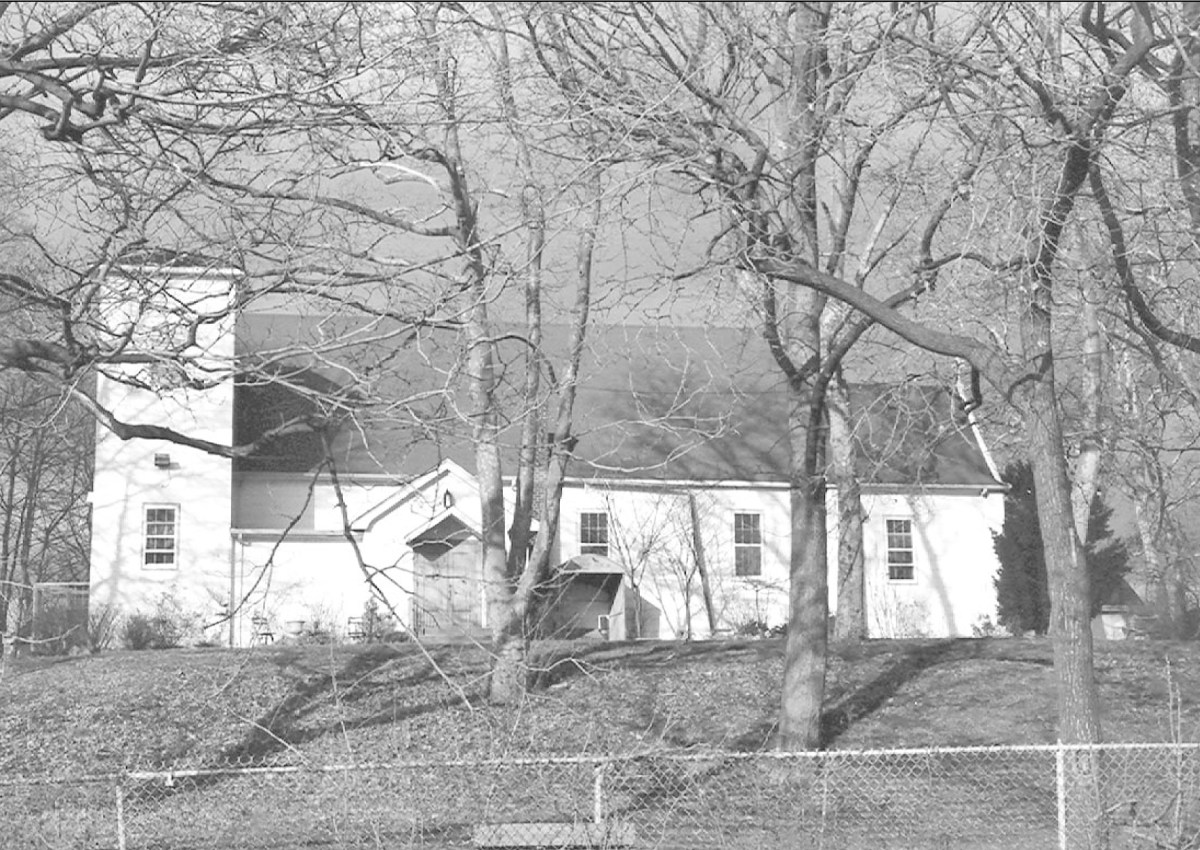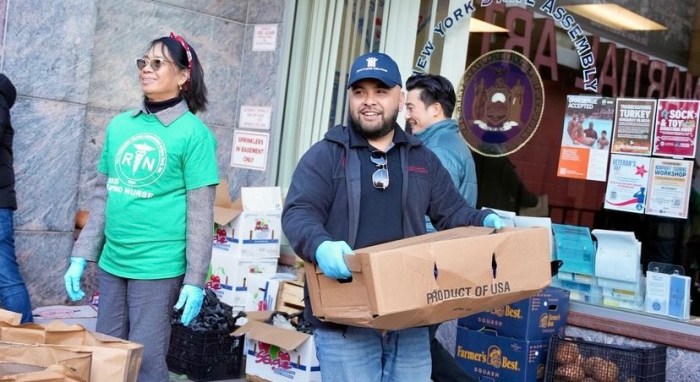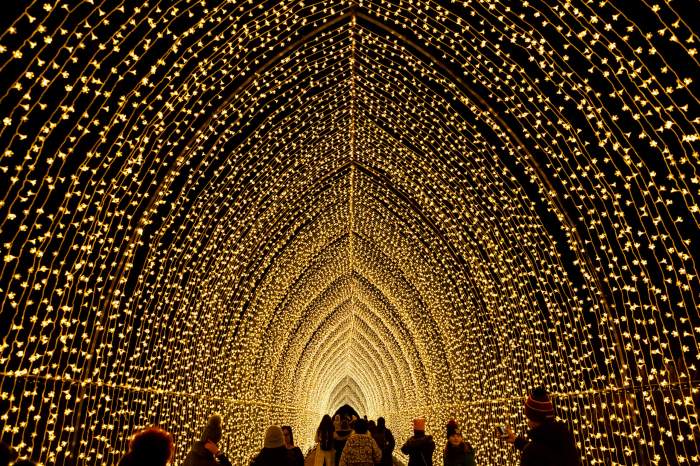At one point in time, St. Saviour’s Church in Maspeth was once one of the neighborhood’s most beautiful blocks — with deep roots in the community’s history.
On the fringe of the industrial part of the neighborhood, the house of worship stood for more than a century on a tree-lined block at the corner of Rust Street and 57th Road. Founded by a relative of a New York governor, it served Maspeth for more than 150 years even as the immediate area changed profoundly.
But the death knell finally rang for the church in January 2006, as the church closed for good, and the property was sold to developers. It triggered a long battle between a local civic group, the new property owners, the city and even a local lawmaker as to the sites future.
“Our Community: Its History and People,” published in 1976 by the Greater Ridgewood Historical Society, outlined much of the St. Saviour’s Church history as follows:
Located on a small hill, surrounded by a wooded block of land, is St. Saviour’s Episcopal Church, one of the oldest and most cherished landmarks of old Maspeth. … The church was organized by Judge David Jones, son-in-law of DeWitt Clinton. He was joined by other well-known pioneers of Maspeth, including James Maurice, in obtaining the land. The church was erected upon the estate of Dr. Frederick Maurice, for whom the avenue is named.
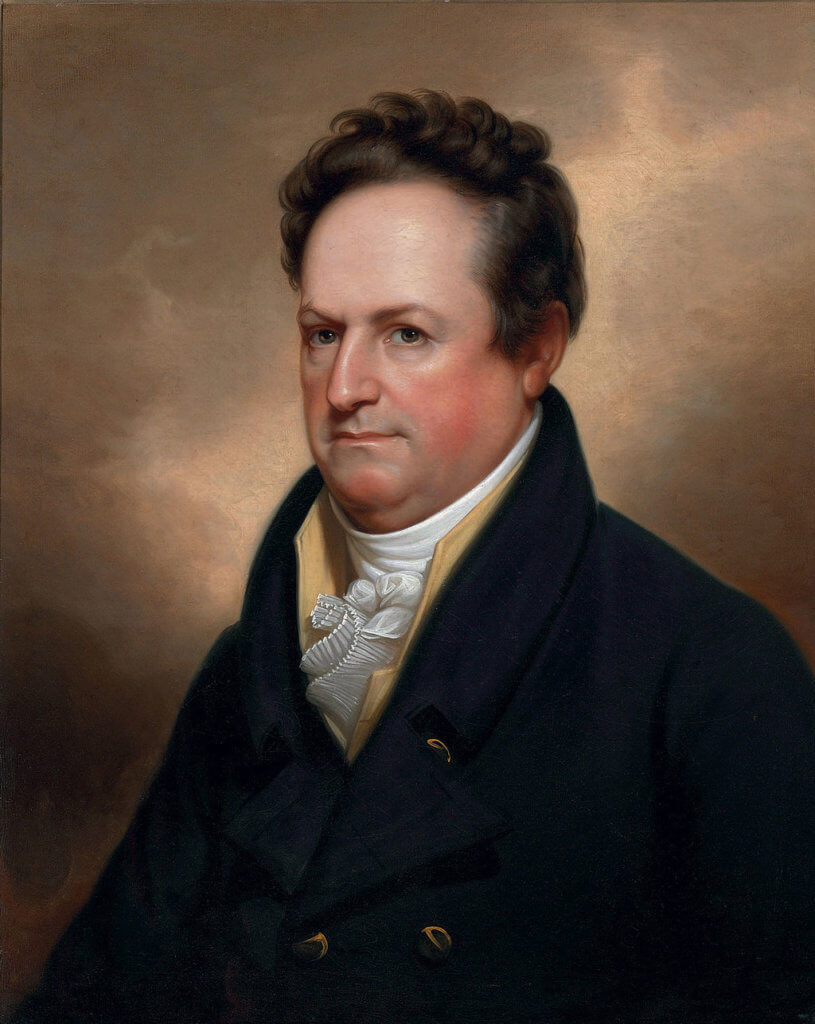
The Gothic style church, constructed out of redwood, was copied from an old English country church that the Maurice family had seen on their European trip. The building was designed for St. Saviour’s by the architect of Trinity Church, Manhattan, Richard Upjohn, and the cornerstone was laid on Nov. 1, 1847.
The first rector of the parish was the Reverend William Walsh, who has been succeeded by 12 other priests, each making their contribution to the life of the church. One of the most notable of these priests was Father Frederick S. Griffin, who was rector for 45 years. The church was known as “Father Griffin’s Church” to many of the neighborhood citizens.
During the expansion of the 20th century, Maspeth became increasingly industrialized. The congregation decreased over these years, with so many young people leaving the community. A small, but spirited, nucleus of 57 church members remained.
In December of 1970, just three days before Christmas, a fire ravaged the church, destroying much of it and leaving its members numb. Under the leadership of its new rector, the Reverend John M. Mills Sr., St. Saviour’s was rebuilt. The bishop of the diocese rededicated it on April 30, 1972. It stands atop the small hill surrounded by stately old trees, the last trace of the rustic community that existed in old Maspeth.
As noted, one of the church’s founders was related by marriage to Governor DeWitt Clinton, who literally reshaped the city and country.
Clinton, while serving as New York City mayor, helped put forth the street grid for Manhattan — plotting out the streets and avenues of the island north of the dense, compact heart of the city, on the southern tip of the island.
After becoming governor of New York, Clinton sought to revolutionize American business and industrial growth, while also transforming New York City into a global metropolis. He accomplished this by plotting out and approving the construction of the Erie Canal, a man-made river through the southern tier of New York, connecting Lake Erie with the Mohawk and Hudson Rivers.
Clinton lived in the Maspeth area for a number of decades in a Colonial-era home constructed near St. Saviour’s. It served as something of a retreat for Clinton, as it was near the then-bucolic Newtown Creek, long before the waterway was forever tainted by the products of industrialization.
The Clinton Home remained a fixture in Maspeth until it was destroyed by a fire in 1933.
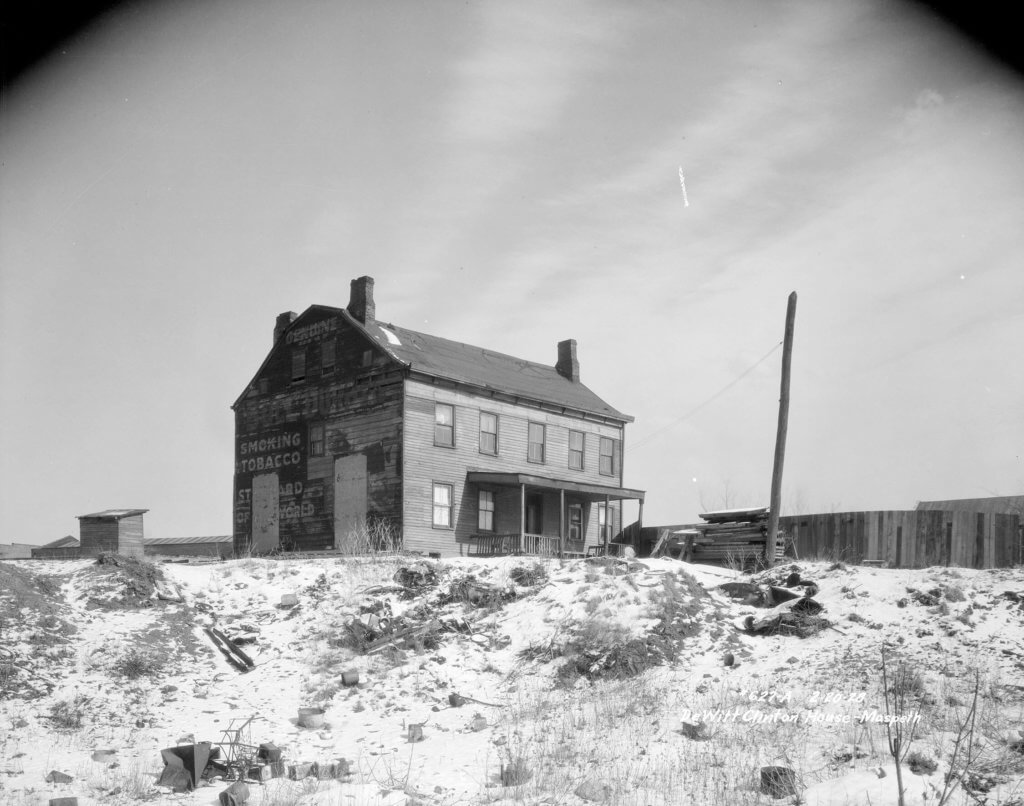
As for St. Saviour’s, the congregation folded in or about 1995 and merged with nearby St. James Episcopal Church in Elmhurst. A Korean church took its place at the former St. Saviour’s site and remained there until selling the church and land a decade later.
The holding company that purchased the site, known as Maspeth Development LLC, sought to clear the block and develop warehouses. News of their plans stirred interest from the Juniper Park Civic Association, then led by current Councilman Robert Holden, and other preservationists.
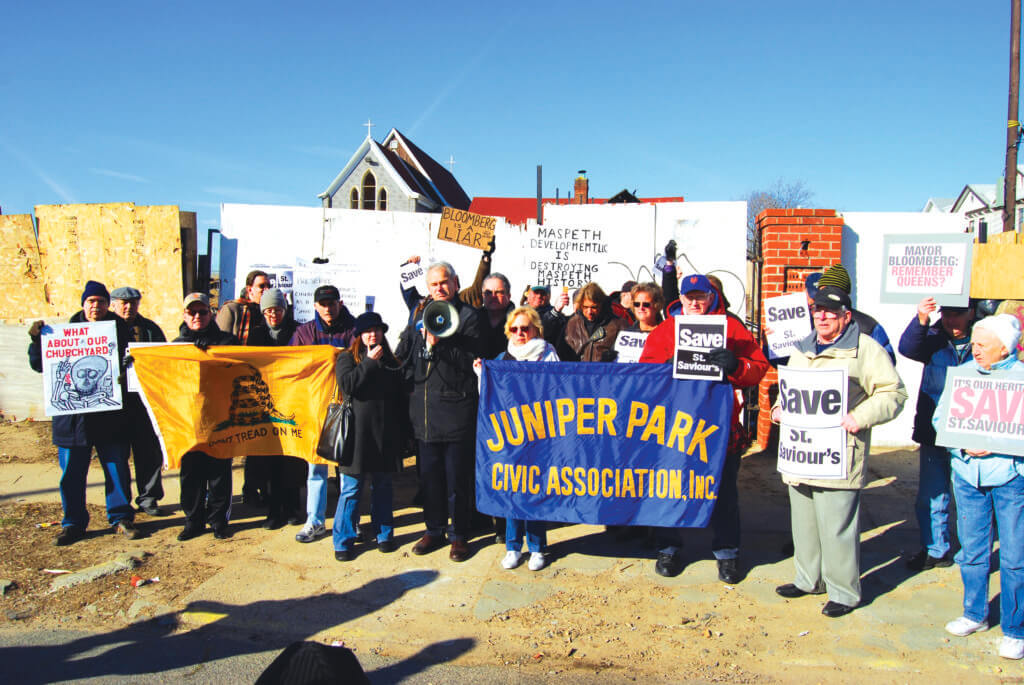
Citing the rich history of St. Saviour’s and the lack of parkland in the community, they called on the city to stop the developer’s plans and landmark the site. The area’s councilman at the time, Dennis Gallagher, sought a compromise: retain half of the site as a park and allow the remaining half to be developed. That wasn’t good enough for the JPCA and others who wanted to keep the site in tact.
For the next two years, the battle over St. Saviour’s raged. Gallagher and the JPCA, which were previously aligned with each other (Gallagher had earned the group’s Man of the Year award in 2004), became bitter enemies engaged in a “holy war” of sorts.
The two sides battled in the press and on the civic scene, with a second, short-lived civic group — the Maspeth Middle Village Civic Association — launched by the councilman’s supporters to rival the JPCA.
At one heated JPCA meeting in September 2006, Gallagher and some of his allies were present. When the councilman attempted to address the crowd, the civic group’s executive members denied him the opportunity — and he walked out.
Later on during the meeting, a JPCA member protested the decision not to allow Gallagher to speak, and criticized Holden and the civic group’s handling of the matter. In response, one of the JPCA executive members at the dais unplugged the speaker’s wired microphone.
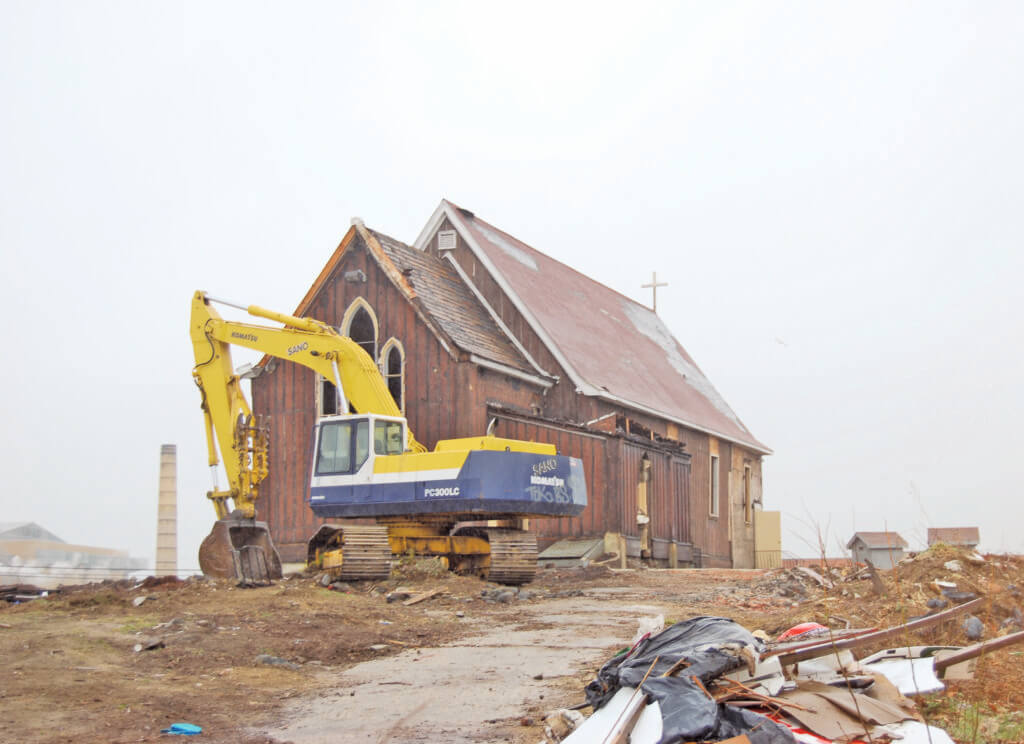
The battle over St. Saviour’s, and between Gallagher and the JPCA, raged on into the summer of 2007 when scandal derailed the lawmakers career. Sexual assault allegations led to Gallagher’s arrest in August of that year; the following spring, he pleaded guilty to a lesser charge and resigned from office. Meanwhile, with its efforts to preserve the site stymied, the JPCA figured out another way to preserve the historic church.
In the spring of 2008, after a major fundraising effort, the JPCA worked to have St. Saviour’s Church dismantled. Piece by piece, frame by frame, the church was carefully taken apart like a completed jigsaw puzzle.
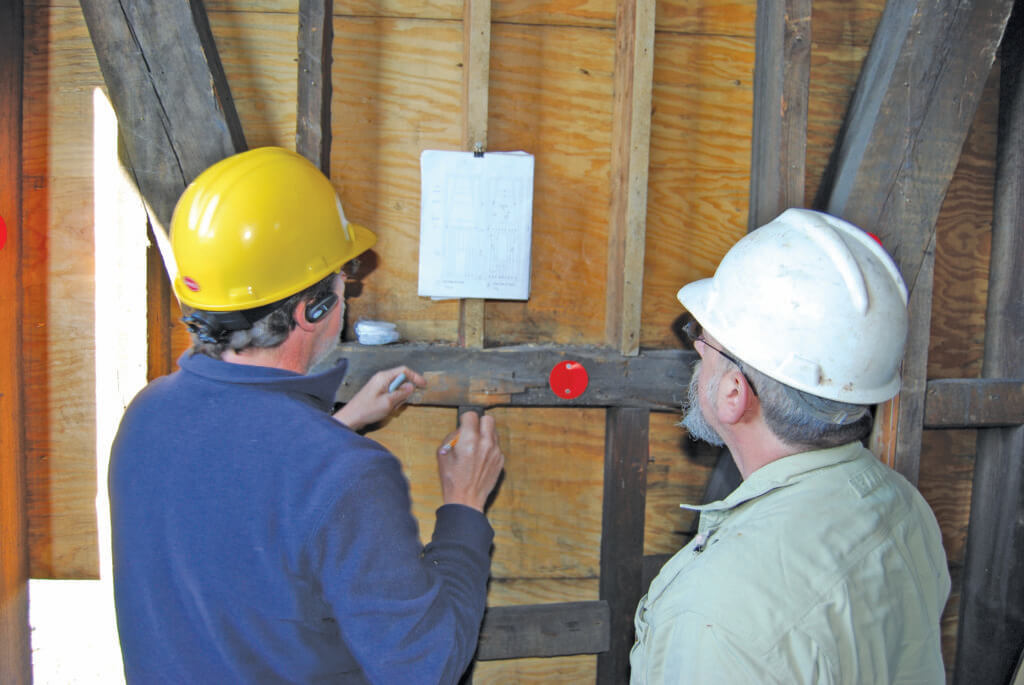
The civic group arranged to have the pieces stored off-site until raising enough funds to rebuild it at another site. The plan was to re-erect the church on an unusable plot of land in All Faiths Cemetery, off the corner of 69th Street and Juniper Valley Road, in Middle Village.
Though the group was successful in saving the physical church, the efforts to have the city turn the Maspeth site into a public park fell apart.
To this day, the church remains in storage — and its former home is now occupied by warehouses that figure to be there for many decades to come.
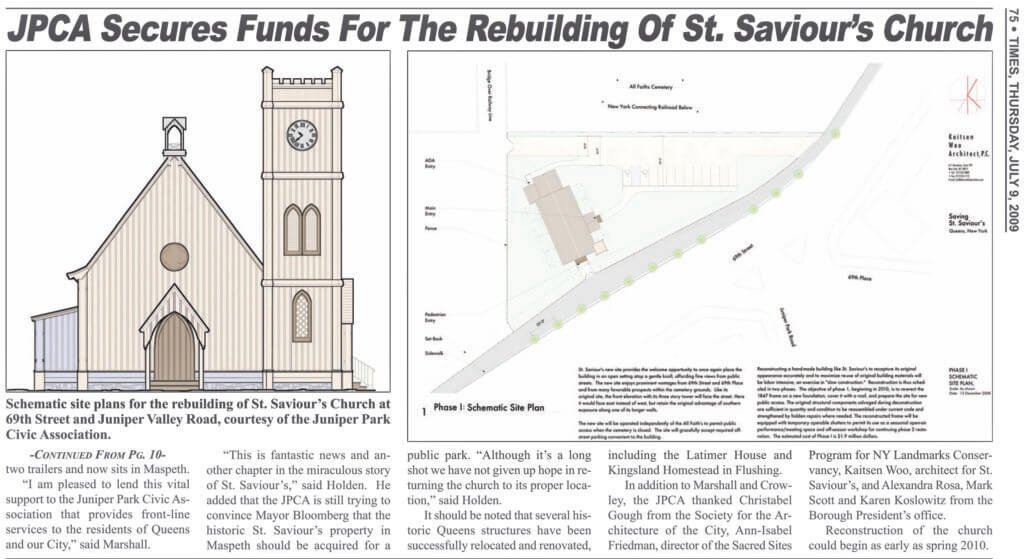
* * *
If you have any remembrances or old photographs of “Our Neighborhood: The Way It Was” that you would like to share with our readers, please write to the Old Timer, c/o Ridgewood Times, 38-15 Bell Blvd., Bayside, NY 11361, or send an email to editorial@ridgewoodtimes.com. Any print photographs mailed to us will be carefully returned to you upon request.

